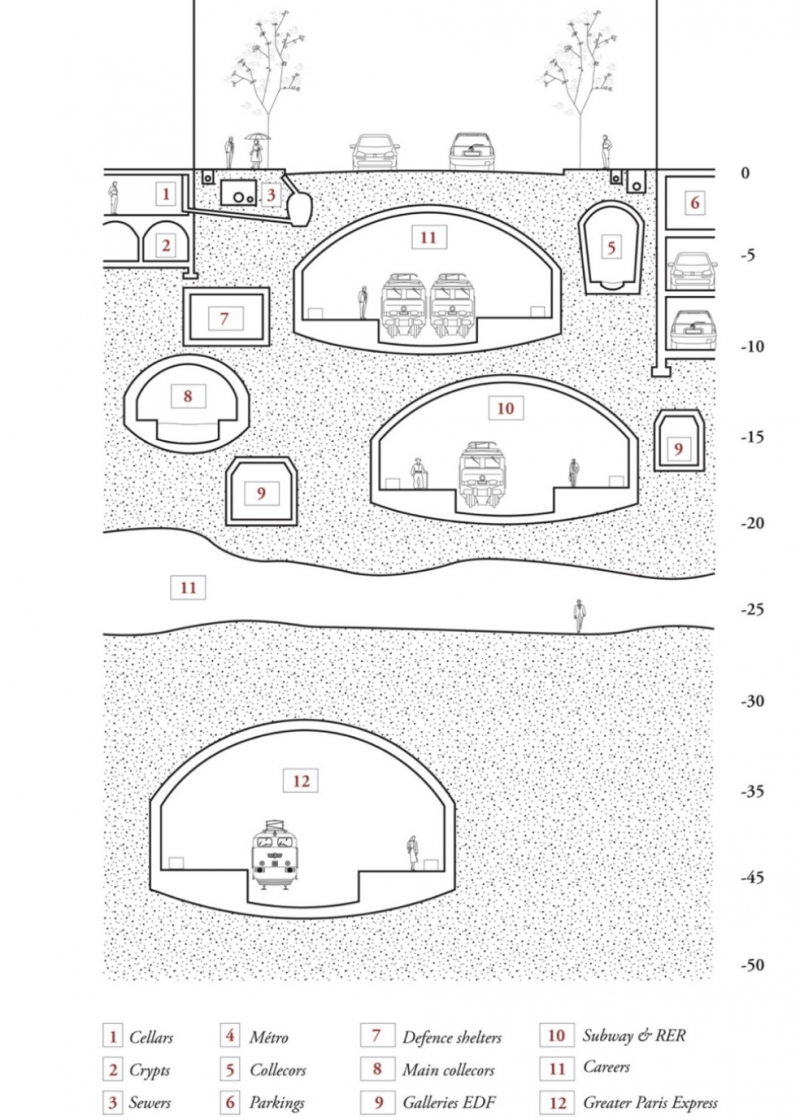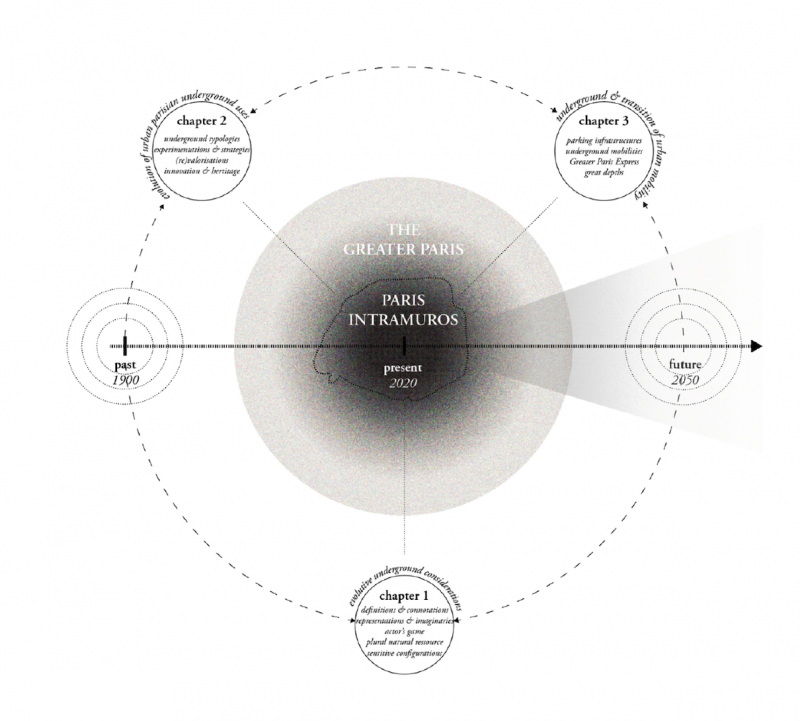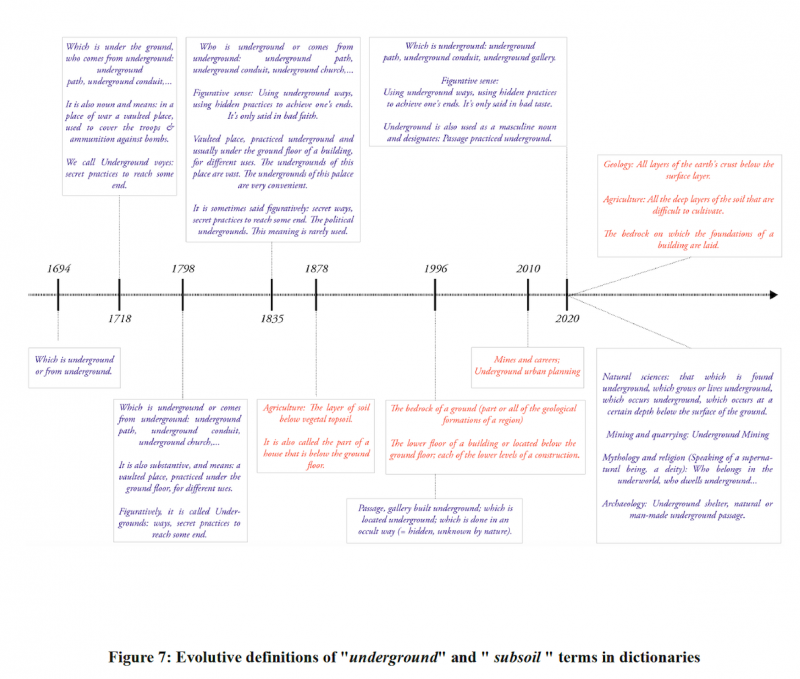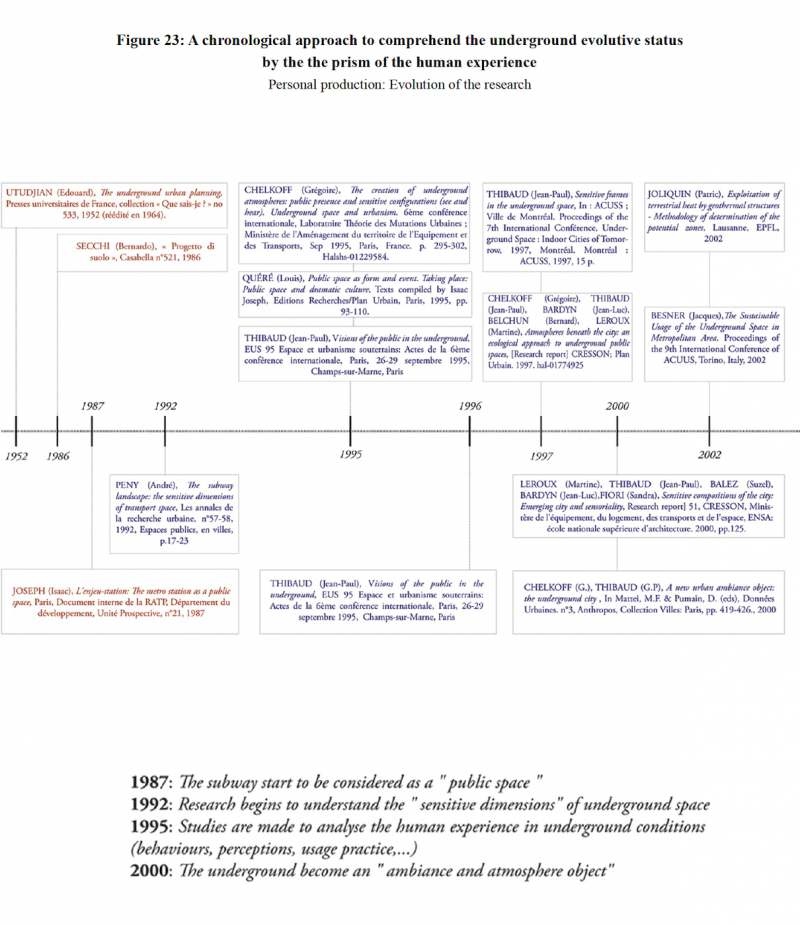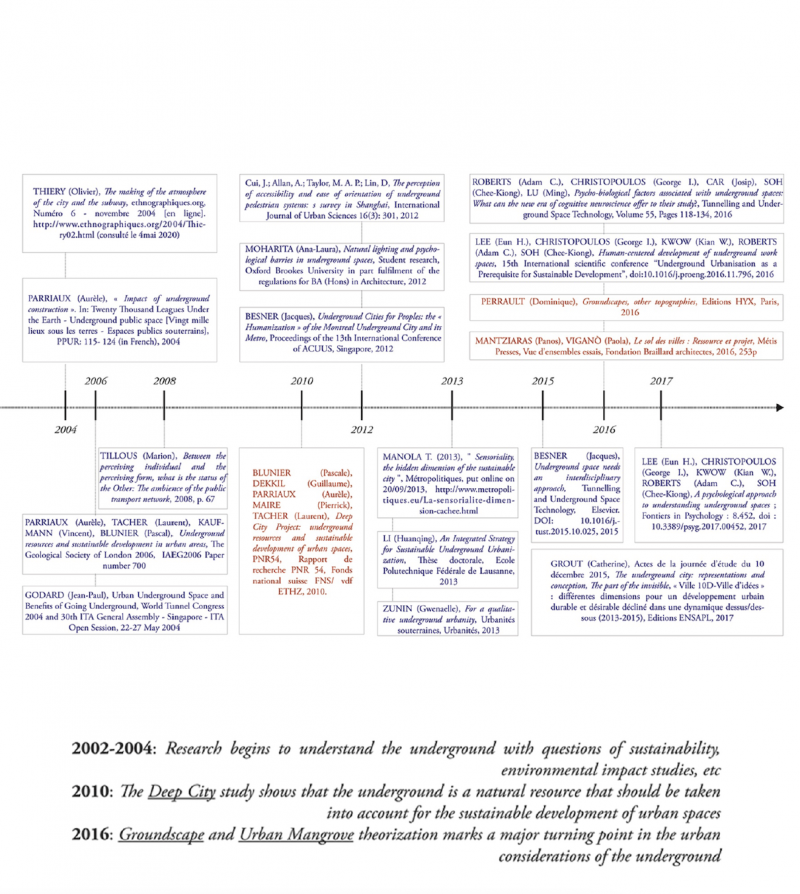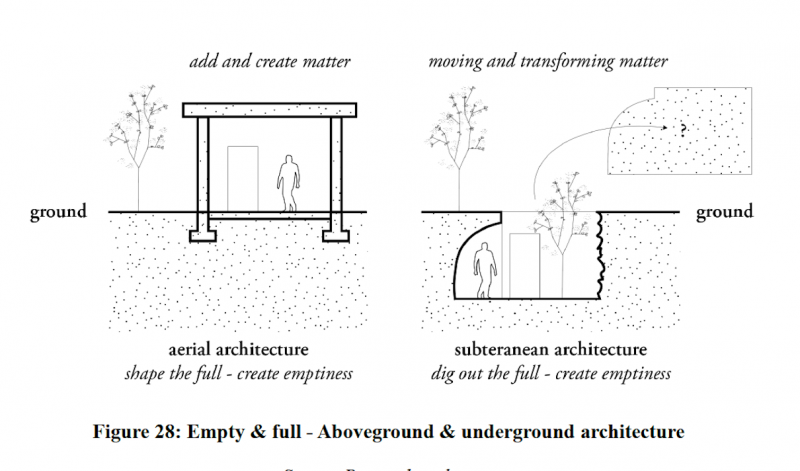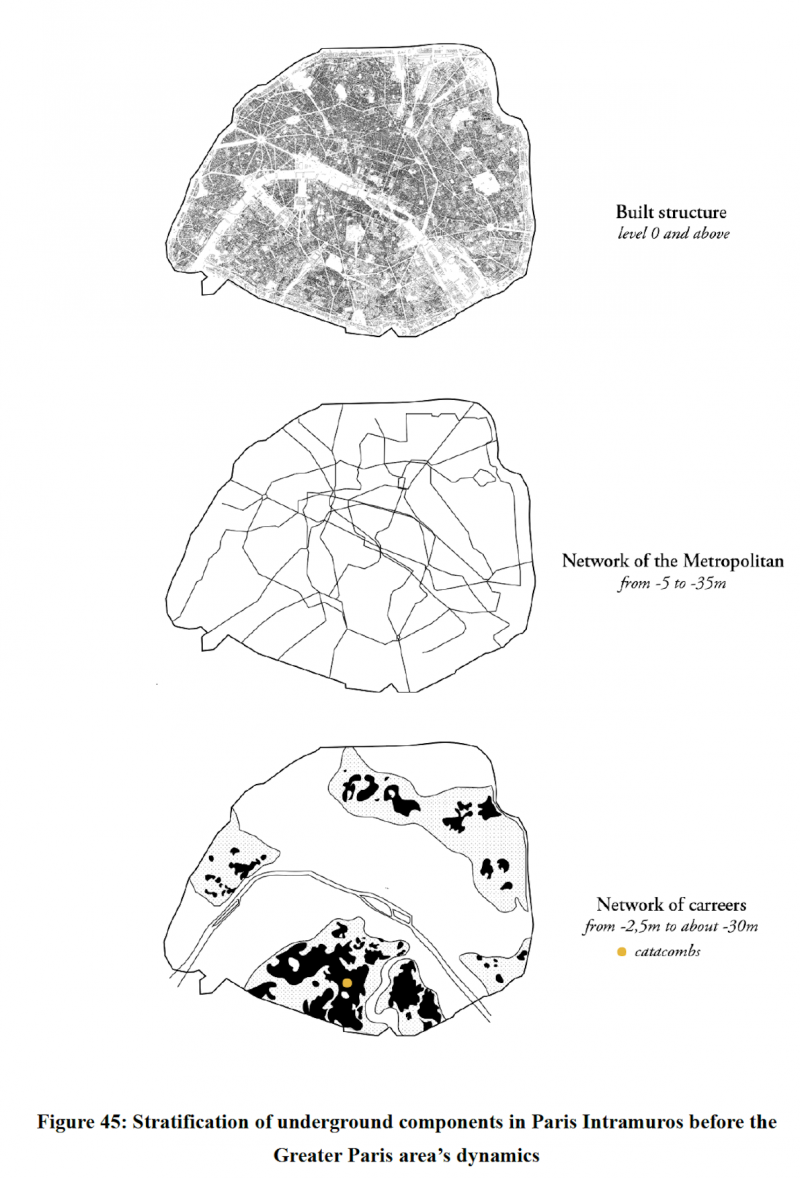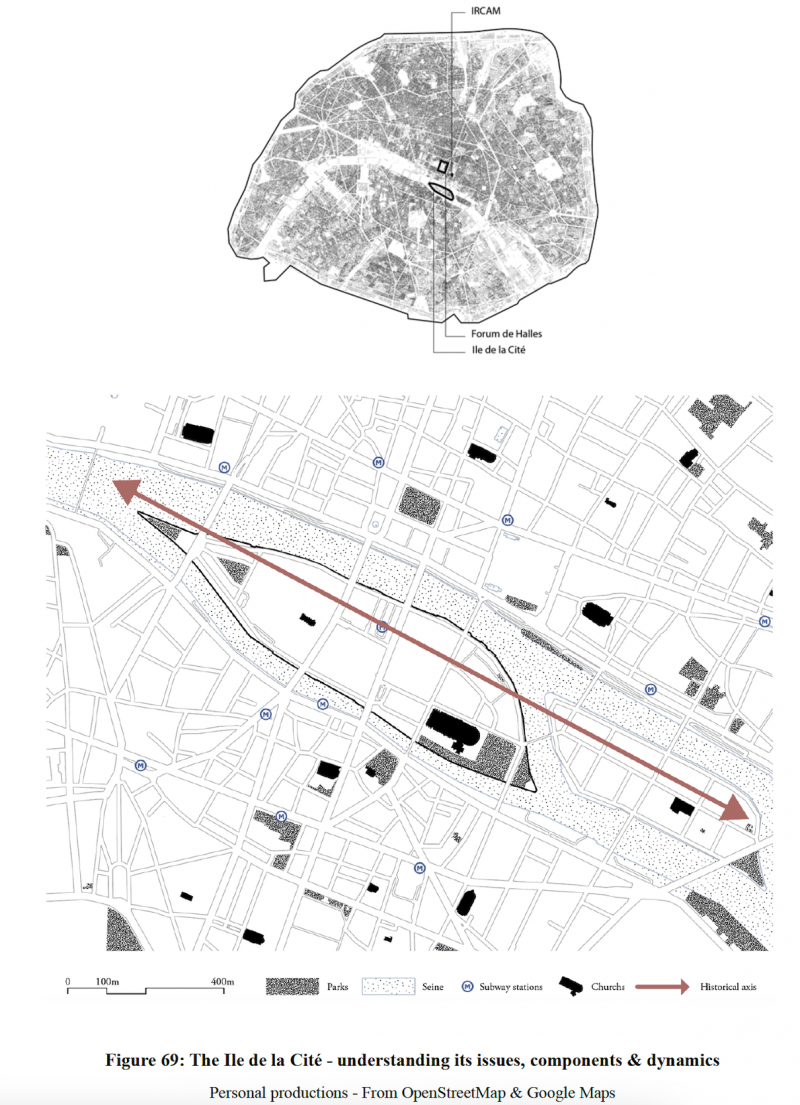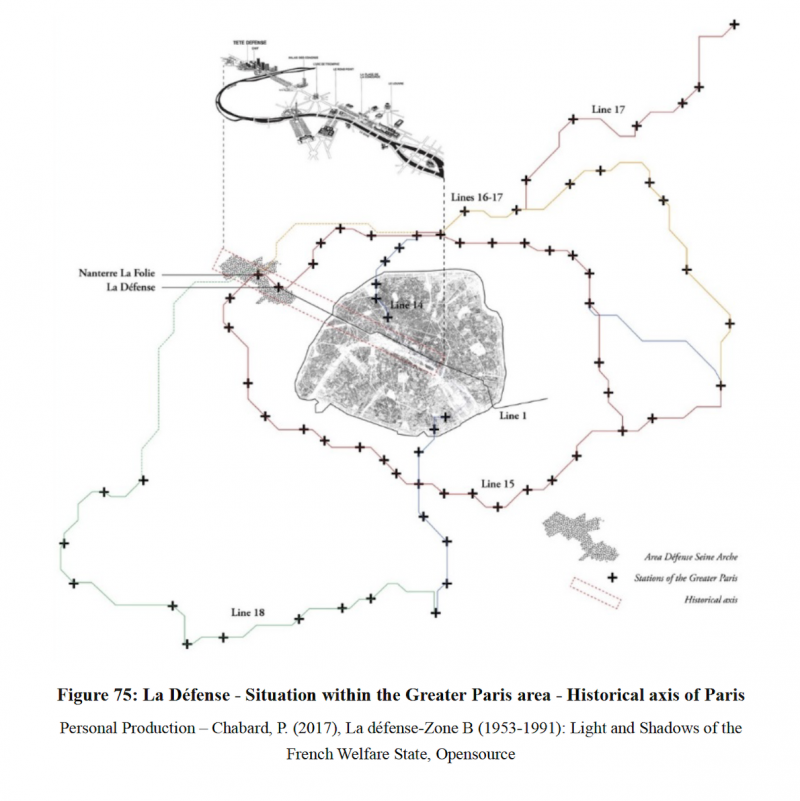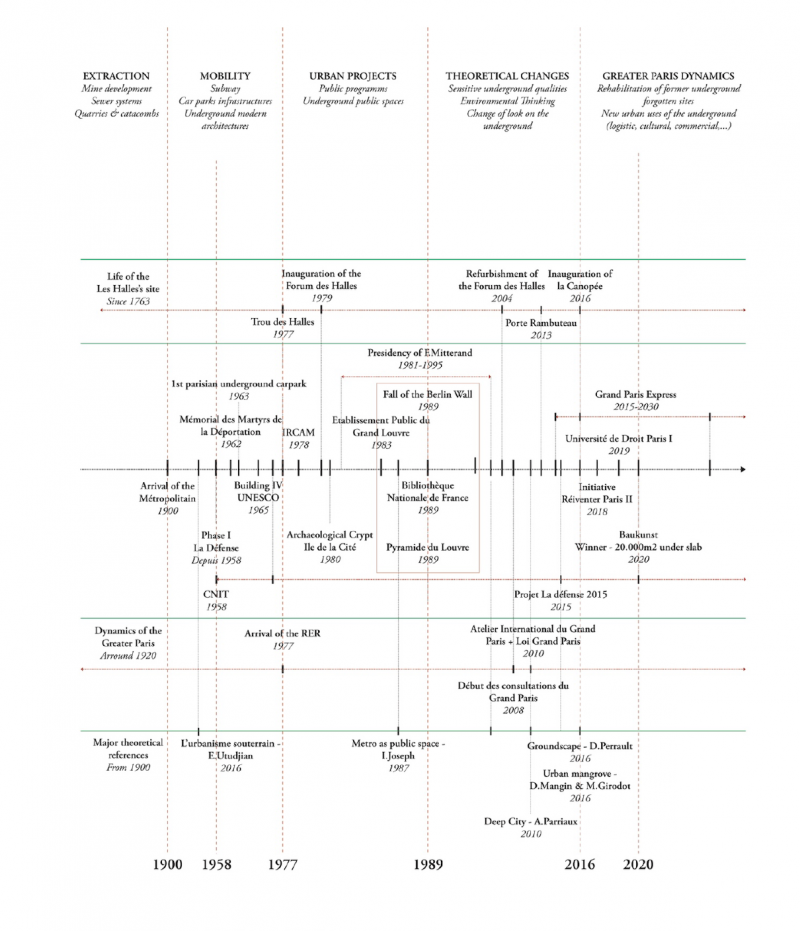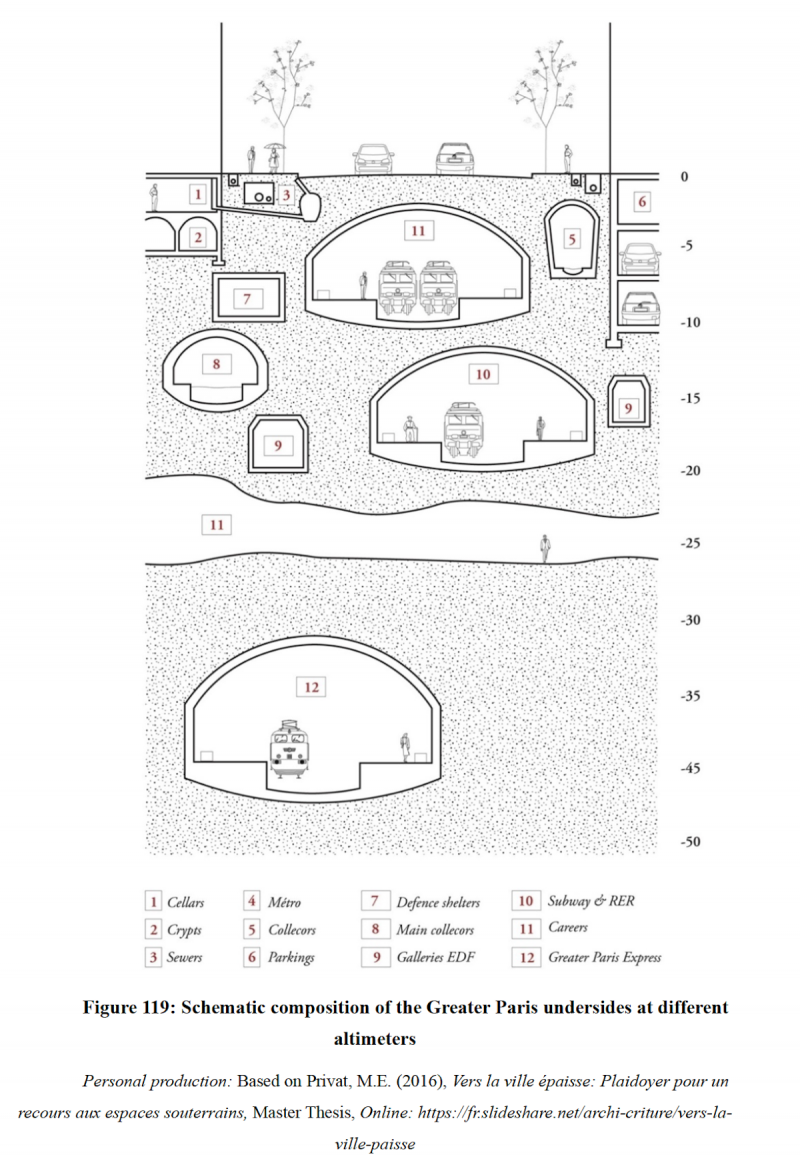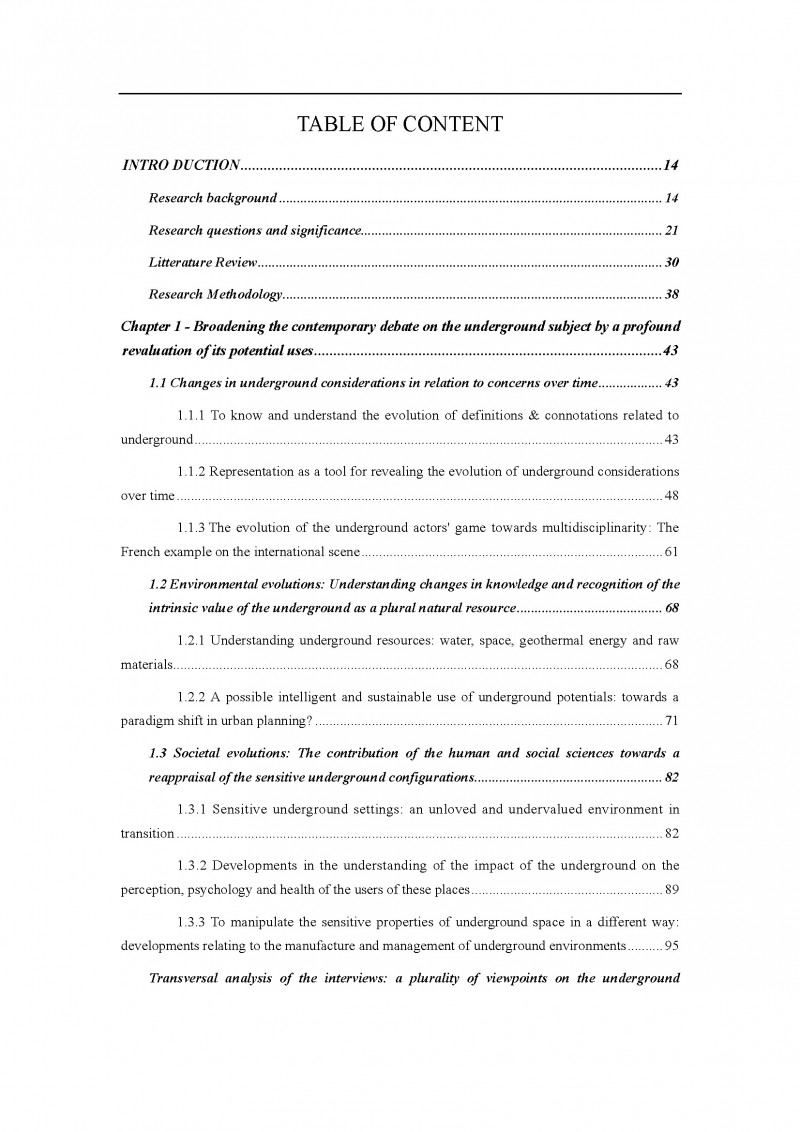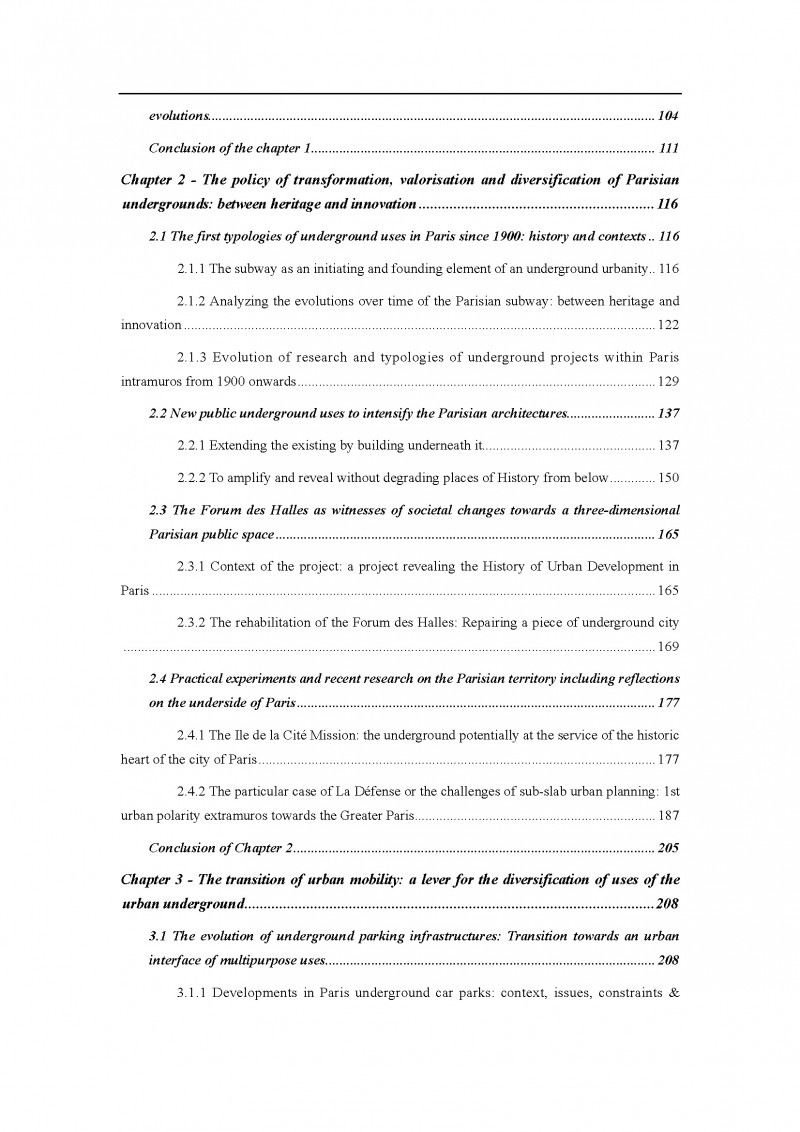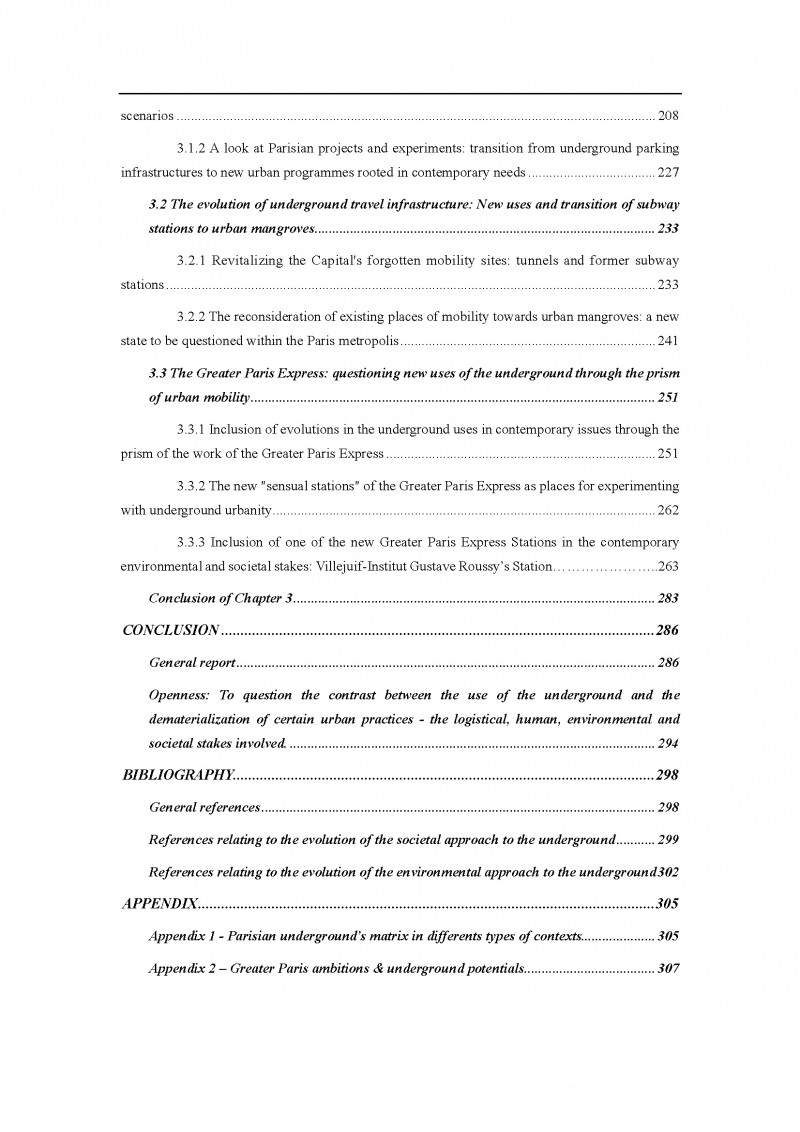The Transition of the Urban Underground’s Role from a Societal and Environmental Perspective
A lot of urban researches on the underground relate its primordial dimension to the functioning and development of the city as a serving layer or for mobility purposes. On the other hand, there are few studies that treat the underground as a plural resource and whose uses modify the city between nature and artificiality.
The contribution of this study is to provide a demonstration to testify that there is an evolutionary process in the urban role of the underground over time and thus a change of status. These are put into perspective with the issues correlated to the evolution of the city, here in the Greater Paris area. This research is based on the principle that the metropolitan transition that is underway from Paris to the Greater Paris is developing through two main axes: the societal approach and the environmental approach. This allows this demonstration to introduce the underground from a point of view which is not only anthropo-centric (relative to Man) but also geo-centric (relative to the Earth). The societal approach questions the evolutions relating to the habitability of underground spaces and their potential to generate new urbanities. The environmental approach questions the evolutions related to the capacity of underground spaces to contribute to the transition towards urban sustainability by questioning their contribution and their relevance, or not. This dual-approach is complementary and converges towards a current redefinition of land use planning including the underground, potentially at the service of urban evolution in its three-dimensionalities.
Indeed, this research starts from the observation that in the Greater Paris area, a transition in the urban role of the underground is developing with a double policy: a policy of renewal of existing underground with experiments of new uses within Paris Intramuros; a policy of deepening the underground potentials with the dynamics brought about by the transition of urban mobility and the Greater Paris project. Finally, the objective of this study is to demonstrate a transition in the urban uses of the underground in the Greater Paris area by inserting them into the issues and objectives that today define a new metropolitan perspective.
Thus, different phases mark this transition from the Paris of 1900 (symbolic date with the arrival of the subway) to the Greater Paris of tomorrow. This study goes so far as to question, on the basis of the developments analysed: what are the limits of the anthropisation of the underground from both a societal and environmental point of view? To build this demonstration, this research inserts different postures, reflections and theories relating to the underground to place them in the history of urban evolution and, in parallel, to found a chronological multi-disciplinary reading. Through the prism of the study of concrete examples and testimonies of a multidisciplinary panel of actors who are actively working on these issues that this research proposes the demonstration of a reconsideration of the underground today with contemporary urban issues. In this way, this research proves, in some cases, the relevance, legitimacy and balance of different uses of the natural and urban depth that is the underground in the context of Greater Paris.




